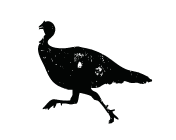With another Midwest rut in the books, let’s look back on some highlights of the most anticipated part of the deer season

Although it’s likely that a Midwestern doe or two will be bred here and there into January, it’s safe to say that most of the does have been bred and that the rut is over. It’s hard to believe because we waited so long for those hallowed November days only to blink our eyes and be waiting once again.
Just as a football team reviews the previous season — the highs, lows, successes, and mistakes — I believe a deer hunter shouldn’t sulk at the rut’s conclusion. Instead, we should make some observations, and let them inform next year’s plans. To that end, let’s conclude the 2024 Realtree Midwest Rut Report by reviewing some highlights and other points of interest.
As usual, folks across the Midwest noticed a substantial increase in scraping activity right around October 20. A couple of days before that, a cold front hit multiple areas, which put bucks on their feet. Many hunters took phenomenal bucks — some 200-plus-inchers even rolled across my social media newsfeed — as a result of that weather event. A good lesson is that bucks are reaching their boiling point, and a good cold snap around October 17-23 can get some monsters cruising in the daylight. If you were waiting for November and missed that cold front, perhaps you should make some playbook changes for next year in case a similarly timed cold front hits.
Across most of the Midwest, the first week of November was marked by warmer-than-usual temperatures and lots of rain. The warmer weather didn’t seem to squash rutting activity. I rattled in and killed a 4 1/2-year-old Kansas buck on November 1, and the daytime high had been 71 degrees. I saw the same buck the day prior in similar temperatures as he and another buck nudged a doe around well before dark. That same week in Wisconsin, I had a pile of bucks on camera chasing does in the daylight while the temps ranged from 55 to 68 degrees. It proves that warm temps don’t shut the rut down, as some hunters believe.
Don’t Miss: 7 Ways to Get a Late-Season Whitetail
Rain was another factor that week. In Kansas, there was nothing but rain in the forecast after I killed my buck, and two other hunters who I met in the area I was hunting stayed in touch and said that hunting was very slow with all of the rain. Melissa Bachman was also in Kansas during that window. She, too, reported that the rain seemed to mitigate the buck activity. But, the action broke loose after the rain, and she arrowed a tremendous buck on November 7. Some hunters say that rain gets them going, but the reports, at least for Kansas, told otherwise. Food for thought.
The action seemed to peak around November 7 across most of the Midwest and for several days following. Right around then, Joel Burham of Whitetail Fit had good success with rattling in bucks in Missouri. And my sister, Clair, arrowed a 4 1/2-year-old buck after rattling him to her decoy in South Dakota. During that same timeframe, Bryan Dawes, who runs Brushy Fork Outfitters in Ohio, said, “The rut is officially wide open.” Looking back, I’ve killed most of my November bucks between November 9 to 13. So, November 7 to 13 is a great week to take a rut vacation if you chose other dates this year that didn’t pan out how you hoped.
As expected, most mature bucks went into the lockdown phase by November 14, sooner in some areas. With lots of does in heat, and because bucks stay with one doe for up to 48 hours and breed her multiple times, buck movements shut down substantially in traditional funnels and over scrapes for five days to a week while most mature bucks hold down does in obscure locations where nothing will likely pester them.
The action resumed around November 18 to 20. That’s when Ben Matykiewicz reported an uptick in rutting behaviors in North Dakota, saying, “Bucks have been very active during daylight hours. From both personal observations and talking with hunters, bucks have been seen chasing and tending does, fighting, and traveling between bedding areas searching for does coming into estrous.” A few different hunters who participated in Wisconsin’s gun season reported rutting behaviors including bucks chasing does and rubbing.
Things began winding down pretty rapidly around Thanksgiving in most areas, although my Kansas and Indiana contacts reported continued rutting as part of their observations. Joe Conyers of Conyers Outdoors, a Kansas outfitting business, said that bucks were sparring and back to hitting scrapes as they do during the pre-rut. M.R. James said of southern Indiana bucks, “Things are still cooking here. I’m seeing bucks on the hunt for willing does and a few locked down in their favorite hidey-hole.”
The first week of December had bucks almost exclusively transitioning into their winter feeding patterns. I haven’t really heard any reports of second-rut activity, but that’s pretty typical as it is scaled way down and happens intermittently and infrequently in isolated pockets, often at night. So with that, food is the name of the game from here on out, ladies and gentlemen. Until next year, Merry Christmas, Happy New Year, and best of luck to all who are still trying to fill a late-season tag.











































